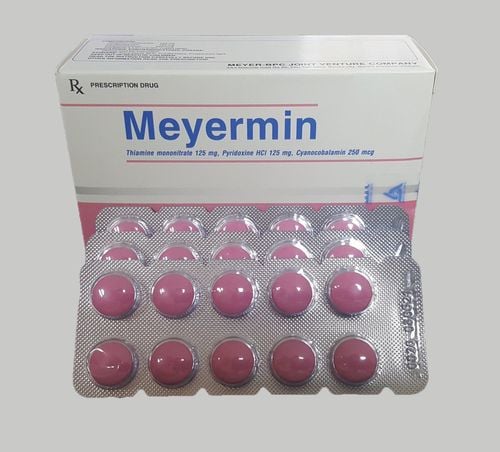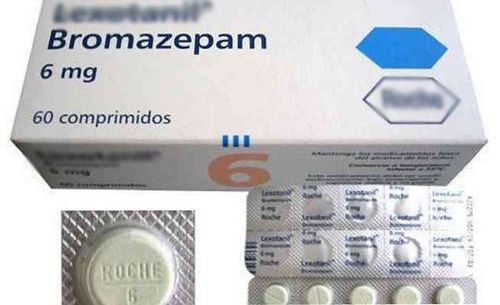This is an automatically translated article.
Article by Specialist Doctor I Vo Khac Khoi Nguyen - Orthopedic Trauma Doctor - General Surgery Department - Vinmec Central Park International General Hospital
Fatigue syndrome is a worldwide problem. This disease is so far often overlooked or overlooked until it becomes a chronic condition. The reported incidence of chronic fatigue syndrome varies in different regions of the world. Community prevalence is 3.6% of the population in the United States. Adolescent prevalence ranges from 0.9% in the United Kingdom to 0.11% in the Netherlands.
1. Understanding fatigue syndrome
Chronic fatigue syndrome may affect 2.5 million Americans. An estimated 25% of patients with severe fatigue syndrome, i.e. at some point in their life have to stay at home or in bed. Patients with chronic fatigue syndrome need more care than patients with many other conditions. However, even in the United States, there are regions where sick people do not receive any specialized medical care. To date, there is no specific test to confirm the diagnosis of the disease. Clinically, there are also no specific symptoms or signs to make a definitive diagnosis. There is no single drug approved by the US Food and Drug Administration (FDA) to treat fatigue syndrome. In contrast, there are about 40 drugs approved by the FDA to treat HIV/AIDS a disease of the times. And there is clearly no cure for fatigue syndrome. It has been more than 80 years since the first documented case of chronic fatigue syndrome in the United States, but so far there is no cure for the disease. In contrast, the time between the first HIV/AIDS infection and the development of a treatment with drugs approved by the Federal Drug Administration (FDA) is less than a decade.
Fatigue syndrome is a chronic, complex, unexplained disorder characterized by the presence of intense fatigue, disability (physical and mental). Patients are interfered with daily activities, do not improve with rest, worsen with exercise, and are often associated with systemic, multi-system manifestations.
2. Difficulty in treating fatigue syndrome
Persistent fatigue syndrome was described by the United States Public Health Service in 1934. At present, the cause of the disease is not clearly known. As a result, the pathological nature of fatigue syndrome has been overlooked and the disease is stigmatized due to its mislabelling as a mental illness or somatic disorder. Such misconceptions about this disease have led to inadequate research on it and inadequate care and treatment. In 2015, the American Institute of Medicine first alerted the disease to millions of Americans and warned that the US government had invested little in research into the disease and provided little patient support.
Although many people with chronic fatigue syndrome continue to work despite their illness for economic reasons and social prestige. But this costs global productivity around 6,900 million euros. It is estimated that every year, each patient causes a loss of 15,200 euros. These figures suggest that fatigue syndrome is a socioeconomic and healthcare burden.
Misidentification of fatigue syndrome has led to inappropriate treatment options. Characterization of fatigue syndrome as a neuropsychiatric disease has led to failure of monotherapy with cognitive behavioral therapy or categorical exercise therapy. When a child has chronic fatigue syndrome, a parent or guardian can be charged under the laws of U.S. subcommittees. In some cases, these children have been separated from their families, leading to increasing severity of illness.
Several professional scientists have pursued this pathological research, but their careers and livelihoods are at stake. Clinicians from several medical schools around the world have been asked to stop examining patients with fatigue syndrome because it takes too much of the doctor's time and the results are not as expected. Treatment requires the cooperation of many specialists. Family, friends and colleagues also do not want to come into contact with the sick person. Patients cannot integrate into the community and daily activities. These are also major barriers that make it difficult for patients to achieve treatment results.

Doctors currently treating fatigue syndrome claim it is "more devastating" than HIV/AIDS. Although HIV/AIDS causes severe consequences for humanity, today, this disease has been gradually stopped. The result is thanks to the attention of the government and the health system of countries before the pandemic of mankind. However, through the problems described above, fatigue syndrome has not yet been given due attention. In the United States - the country with the world's leading health care system, the US Government allocates a much lower cost for the study of chronic fatigue syndrome than other chronic diseases. Meanwhile, in the United States, it is estimated that the number of patients with chronic fatigue syndrome can be twice as many as those with HIV/AIDS. For example, the estimated 2018 research cost per HIV/AIDS patient in the United States is $2,000. While spending on chronic fatigue syndrome research is less than $6 per patient. A difference of up to 357 times.
In short, while the medical industry has many difficulties in diagnosing and treating fatigue syndrome, it is more important than anyone to protect yourself against this disease. A diet with adequate nutrition, maintaining a healthy lifestyle, working and resting properly is a good shield to help your body not suffer from fatigue syndrome. It is also the motto that prevention is better than cure.
Vinmec International General Hospital now has a periodical health checkup package, suitable for each object, age, and customer needs. Through the examination, the doctor will accurately assess the current health status as well as prevent the risk of diseases that you may have, advise on a complete nutrition regimen. All examination procedures at the hospital are performed by a team of qualified doctors, combined with modern equipment. Therefore, you can be assured of the quality of medical care at Vinmec.
Please dial HOTLINE for more information or register for an appointment HERE. Download MyVinmec app to make appointments faster and to manage your bookings easily.














